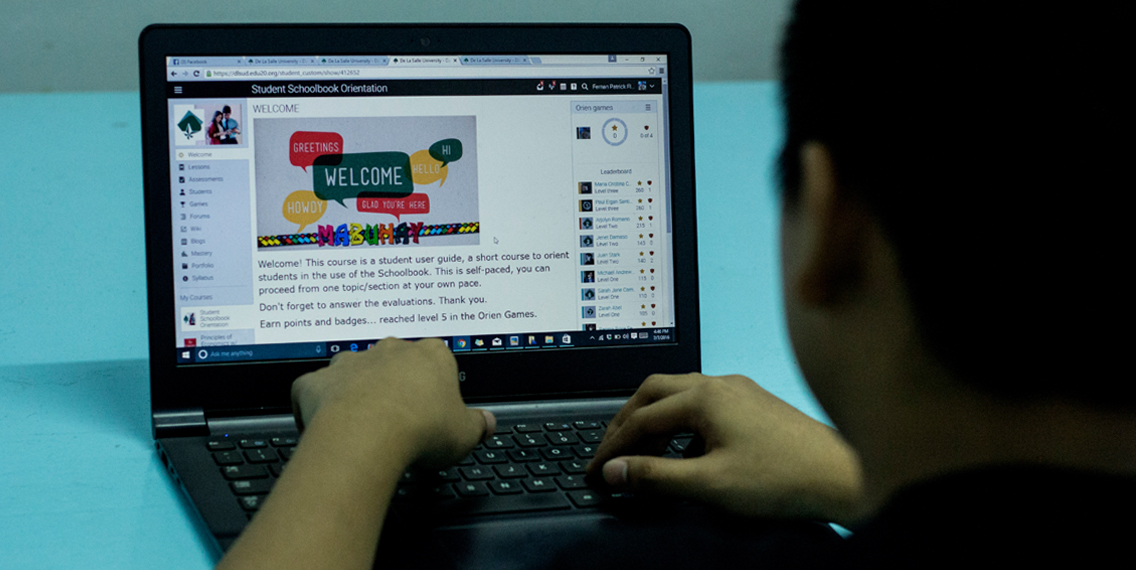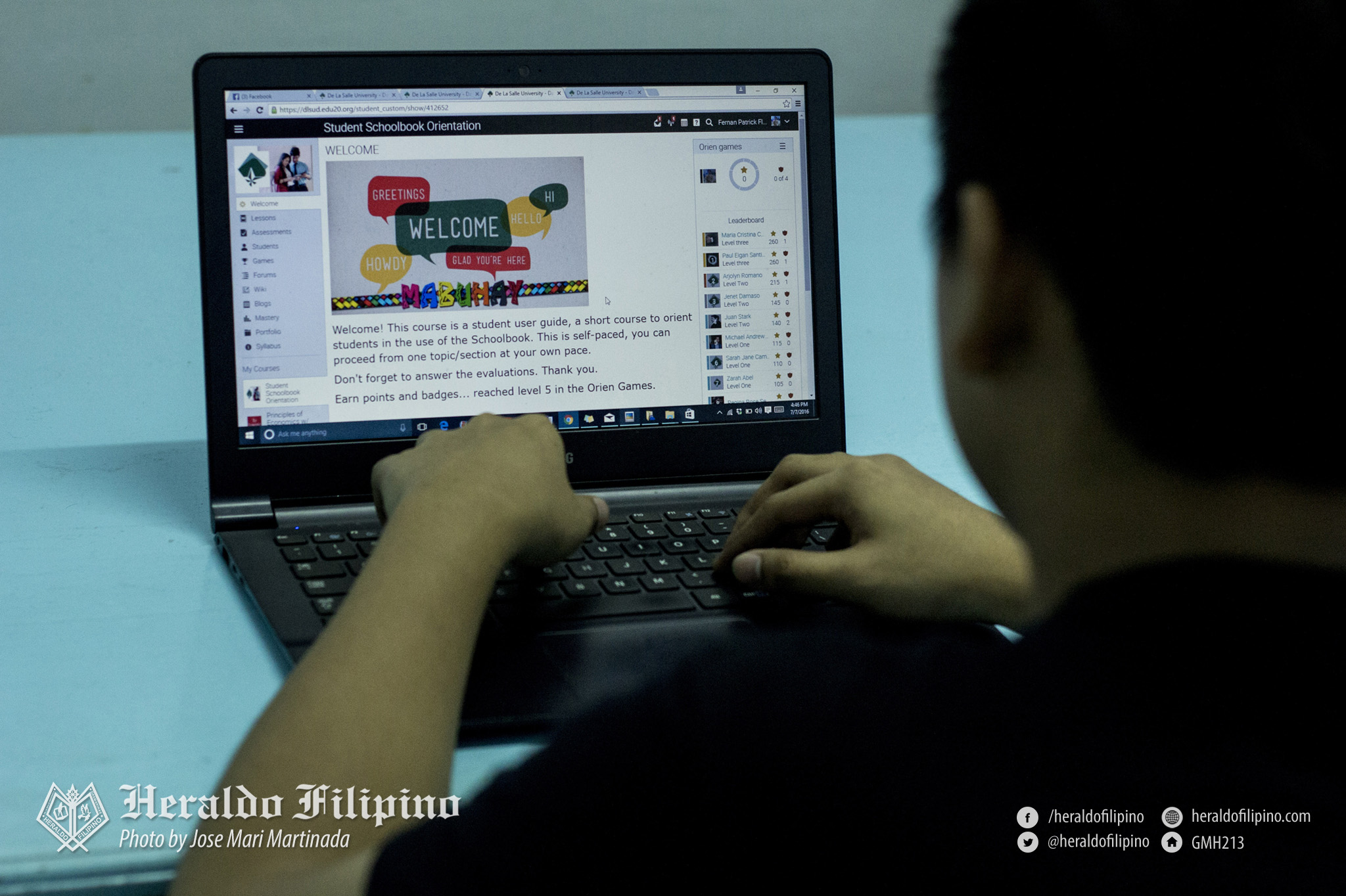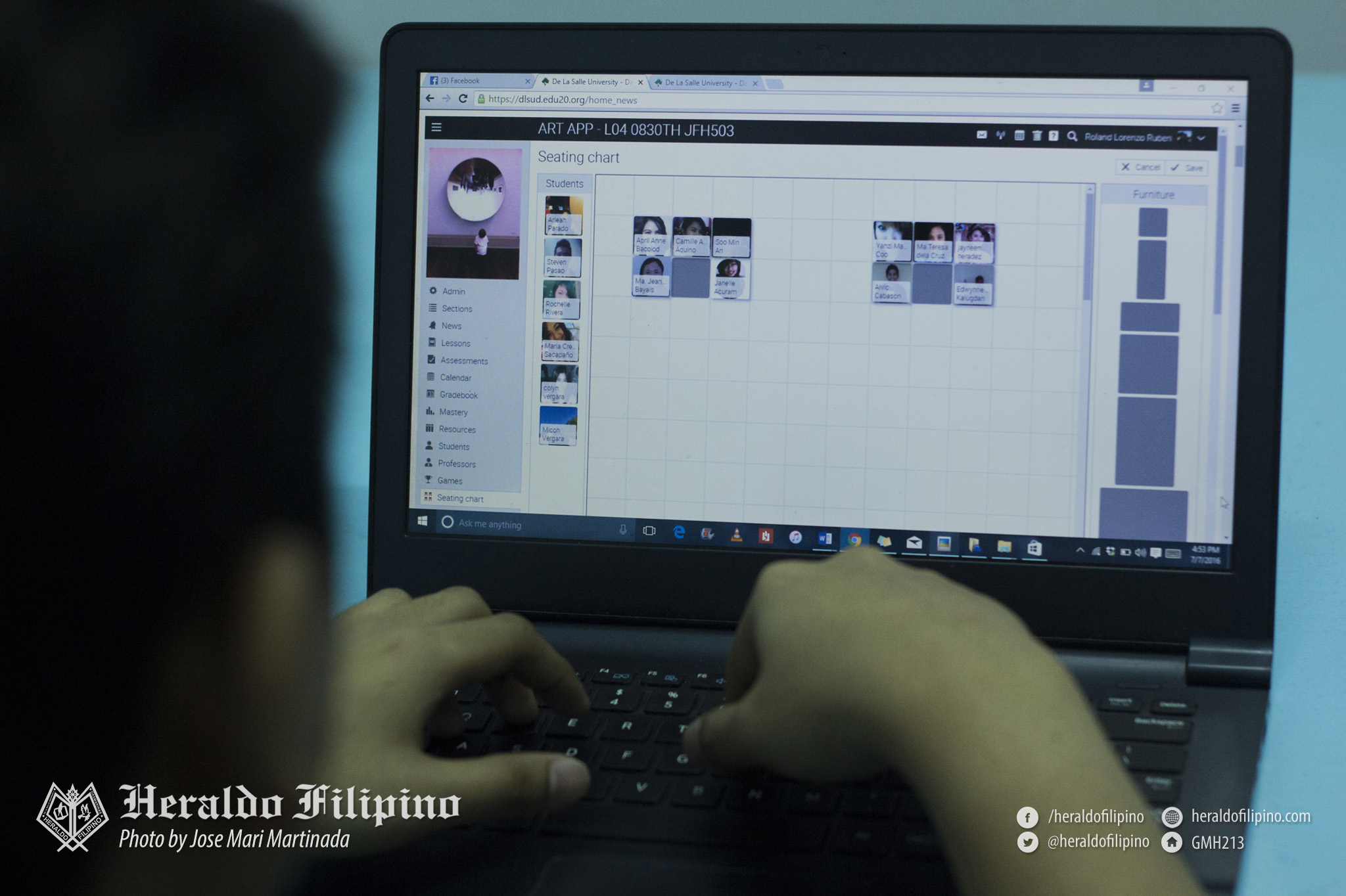Schoolbook features new seating chart, gamification
With the aim to encourage the students’ active participation in e-learning, the Center for Innovative Learning Programs (CILP) launched seating chart and gamification features on DLSU-D’s virtual learning environment tool Schoolbook.
The seating chart is a digital seat plan used to determine where students should take their seats in a classroom or during an activity, while the gamification is an application of typical game elements and game principles in various academically related activities.
Gamification uses points and rewards system to encourage students to read lessons and answer online assessments uploaded in Schoolbook.
Digital seat plan
CILP Director Jenielyn Padernal said the seating chart will help minimize paper use to check student attendance and support the Environmental Resource Management Center’s advocacy in reducing waste generation.
According to Padernal, most professors who use Schoolbook and NEO Learning Management System (LMS) requested for a digital seat plan on the DLSU-D Schoolbook. “Mayroon doong (DLSU-D Schoolbook) support team where teachers’ requests could be read through an online discussion forum, kaya nababasa namin ‘yong requests nila,” Padernal said.
She mentioned that the DLSU-D Schoolbook is currently subscribed to NEO LMS, which delivers online education to various schools and universities.
Through the use of seating charts, professors are allowed to customize the chart in any form while students are required to use recent photos as their profile pictures for identification purposes.
The seating chart allows professors to conveniently customize a class seating plan through Schoolbook.
Gamifying Schoolbook
The gamification feature serves as motivation for the students to open their lessons and answer online assessments to enhance their analytical skills while learning, said CILP Learning Objects Development Coordinator Roland Lorenzo Ruben.
With gamification, students can gain points and level up during the game by reading assigned lessons and answering online assessments uploaded on the DLSU-D Schoolbook.
He said the points earned are not equivalent to the students’ grades, but these could affect their grades depending on the professor’s decision.
“Puwede siya (professor) magbigay ng extra credit [or incentive], depende kung ano ang rule of the game,” he said.
Ruben, who is also a professor from the Social Sciences Department, said he uses gamification for his e-class.
“In my class, kung na-reach mo ang isang level na ‘to, may ‘late pass’ reward [ka]. Hindi [kasi] maiwasan na may laging late, so once they earned their reward, puwede nilang gamitin ‘yon para perfect attendance. So, doon mapupunta ‘yung impact niya sa grade, kung ginegrade-an ang attendance,” Ruben explained.
He furthered that gamification and game-based learning are different since gamification uses common game elements such as points and rewards to encourage the audience’s engagement to the activity, while game-based learning uses games to enhance learning experience itself.
“For example, makikita mo [ang] gamification sa SM advantage card, you earn more points when you buy. Kahit saan ka mapunta, nandoon ‘yong gamification. Sa Schoolbook, ano’ng advantage noon? Magbabasa ako nang magbabasa para maka-earn nang points,” Padernal said. With a report from Jazmine Estorninos







